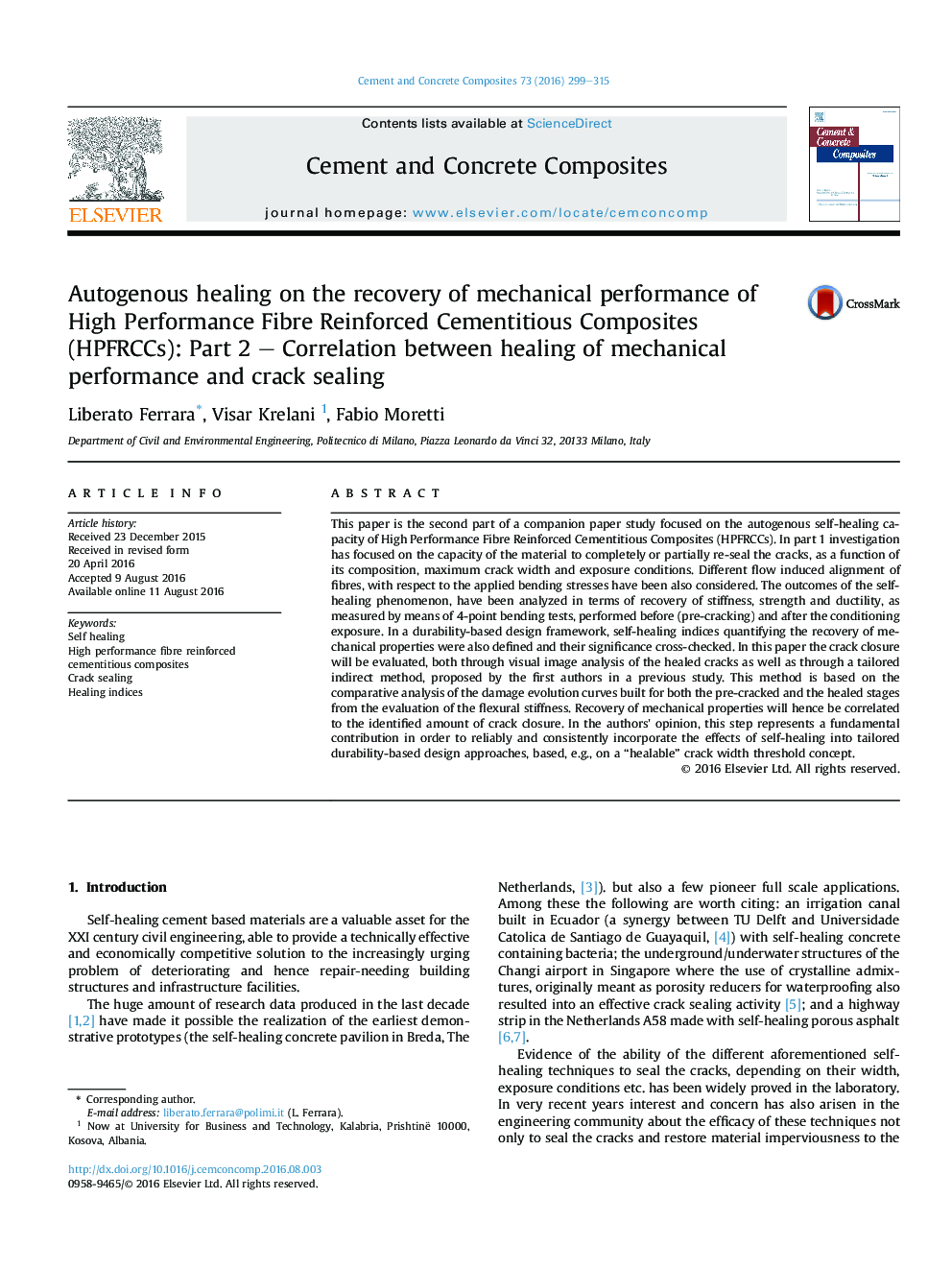| Article ID | Journal | Published Year | Pages | File Type |
|---|---|---|---|---|
| 1454252 | Cement and Concrete Composites | 2016 | 17 Pages |
This paper is the second part of a companion paper study focused on the autogenous self-healing capacity of High Performance Fibre Reinforced Cementitious Composites (HPFRCCs). In part 1 investigation has focused on the capacity of the material to completely or partially re-seal the cracks, as a function of its composition, maximum crack width and exposure conditions. Different flow induced alignment of fibres, with respect to the applied bending stresses have been also considered. The outcomes of the self-healing phenomenon, have been analyzed in terms of recovery of stiffness, strength and ductility, as measured by means of 4-point bending tests, performed before (pre-cracking) and after the conditioning exposure. In a durability-based design framework, self-healing indices quantifying the recovery of mechanical properties were also defined and their significance cross-checked. In this paper the crack closure will be evaluated, both through visual image analysis of the healed cracks as well as through a tailored indirect method, proposed by the first authors in a previous study. This method is based on the comparative analysis of the damage evolution curves built for both the pre-cracked and the healed stages from the evaluation of the flexural stiffness. Recovery of mechanical properties will hence be correlated to the identified amount of crack closure. In the authors' opinion, this step represents a fundamental contribution in order to reliably and consistently incorporate the effects of self-healing into tailored durability-based design approaches, based, e.g., on a “healable” crack width threshold concept.
